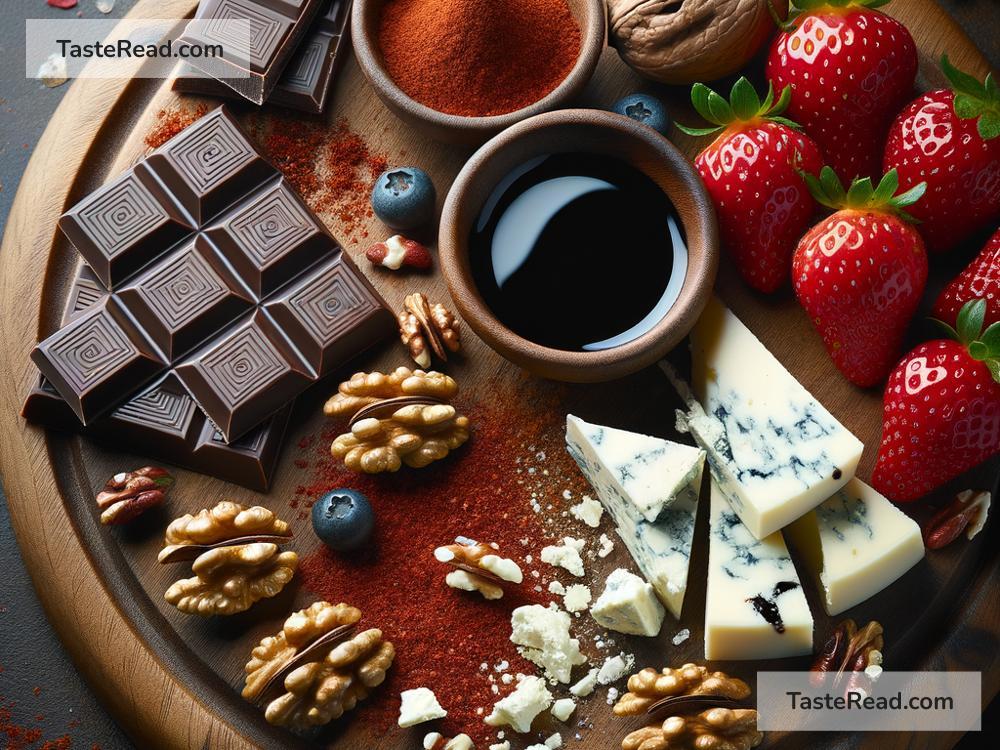The Science of Flavor Pairings: How Foods Work Together
Have you ever wondered why some food combinations taste so good together? Why does chocolate taste amazing with peanut butter? Or why does tomato pair so well with basil? The simple answer is “flavor pairing.” Behind every great dish lies a little bit of science, explaining why certain foods go hand in hand. In this blog article, we’ll explore the fascinating world of flavor pairings in plain, simple language.
What Is Flavor Pairing?
Flavor pairing is the idea that certain foods taste better together because their flavors complement each other. Every food has unique chemicals that create its taste and smell. These chemicals are called “flavor compounds.” When two foods share similar flavor compounds, they tend to work well together. This is why pairing them can create bold, delicious combinations that make our mouths happy.
Think of flavor pairing like matching clothes. Some colors look better together because they balance each other out. Similarly, food flavors can enhance each other when paired right. Scientists and chefs study these combinations to understand why certain pairings are more enjoyable than others.
How Do Flavors Work?
To understand flavor pairing, we need to learn what “flavor” really means. Believe it or not, flavor is more than just taste. It’s a mix of taste, aroma (smell), texture, and even your brain’s perception. Here are the five main tastes:
- Sweet: Found in sugary foods like fruits, candy, and honey.
- Salty: Found in foods with salt, like chips and pretzels.
- Sour: Found in foods like lemons, vinegar, and yogurt.
- Bitter: Found in coffee, dark chocolate, and kale.
- Umami: A savory taste found in mushrooms, soy sauce, and cheese.
When we eat food, our taste buds, nose, and brain work together to create the full experience of flavor. If a food has a strong aroma, it builds a lot of its flavor through smell. That’s why we lose some sense of taste when we have a stuffy nose!
Why Do Certain Foods Pair Well?
Scientists have discovered that foods pair well when they share similar flavor compounds. For example:
- Chocolate and peanut butter: Both have compounds that enhance rich, nutty, and creamy flavors. When combined, they create a perfect balance of sweetness and smoothness.
- Tomato and basil: Both have compounds that complement fresh, earthy, and slightly sweet tastes. This combination is a favorite in Italian cooking.
- Strawberries and balsamic vinegar: Strawberries are sweet, while balsamic vinegar adds a tangy kick. This pairing creates a unique balance of sweet and sour.
Sometimes, opposites attract. Pairing contrasting flavors can also create harmony. For example:
- Sweet and salty: Think salty pretzels dipped in chocolate or salted caramel. The sweetness balances the saltiness, making the combination irresistible.
- Sour and spicy: Foods like spicy lime tacos or chili-lemon shrimp combine the heat of spice with the refreshing zing of sourness.
Chefs use these principles to invent exciting new meals. They try to find ingredients that “match” or provide the right contrast for a balanced dish.
Tools for Flavor Pairing
Flavor pairing isn’t just guesswork—it’s backed by science. Chefs and food experts rely on research and even special tools to create the best combinations. One popular resource is the “food pairing wheel.” This is a chart that lists foods and their flavor compounds, showing which items pair well together.
Another helpful tool is molecular gastronomy, which combines cooking with chemistry. Scientists study the molecular structure of foods to figure out how their flavors interact. For example, they’ve found that beer pairs well with certain cheeses because their compounds complement one another.
Even if you’re not a scientist or chef, you can practice flavor pairing in your everyday cooking. Experiment with different ingredients and take inspiration from recipes online.
The Role of Culture and Tradition
Flavor pairings also depend on cultural influences. Every cuisine has its own traditional pairings passed down over generations. For example:
- Mexican cuisine: Combines lime with cilantro for a fresh, tangy taste.
- Indian cuisine: Pairs spices like turmeric, coriander, and cumin for bold, layered flavors.
- Japanese cuisine: Uses ingredients like soy sauce and ginger to enhance seafood dishes.
These combinations often reflect local ingredients that grow in the region. While science explains the chemistry, culture adds a rich history to flavor pairings.
How to Pair Flavors at Home
You don’t need fancy tools or a kitchen degree to try flavor pairing yourself. Here are some tips:
- Think balance: Combine strong flavors with mild ones. For example, pair creamy avocado with tangy lime.
- Use contrasts: Sweet foods can pair with salty or sour flavors to create depth in your dish.
- Experiment with herbs and spices: Add basil, rosemary, or cinnamon to familiar dishes to change their flavor profile.
- Start simple: Try pairing chocolate with fruit or nuts. Use honey to sweeten salty and spicy recipes.
Final Thoughts
Flavor pairing combines science, creativity, and a little bit of magic. By understanding how flavors interact, you can improve your cooking skills and even discover your own unique combinations. Whether you’re making a fancy dinner or a simple snack, flavor pairing can turn ordinary food into something extraordinary. So, what will you pair next?
Let your taste buds lead the way!


